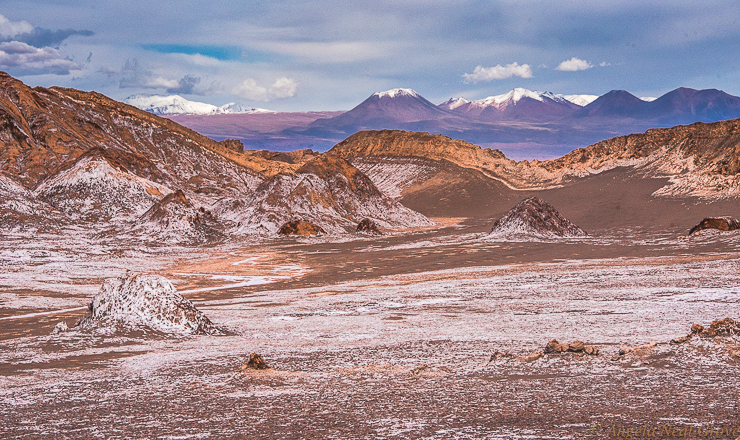
Exploring the Otherworldly Atacama Desert
The Otherworldly Atacama Desert, Chile, is a land of arid landscapes, salt lakes, geysers and rugged wind-sculpted canyons. It is rimmed with active volcanos which form the border with Bolivia. Historically it is the driest place on earth. Between the years of 1570 and 1971 no significant rainfall was recorded.
To get to Atacama I flew from Lima, Peru to Santiago and then north to Calama. (I had been exploring the Headwaters of the Amazon). From Calama it was about a two hour drive to San Pedro de Atacama and the Explorer Lodge.
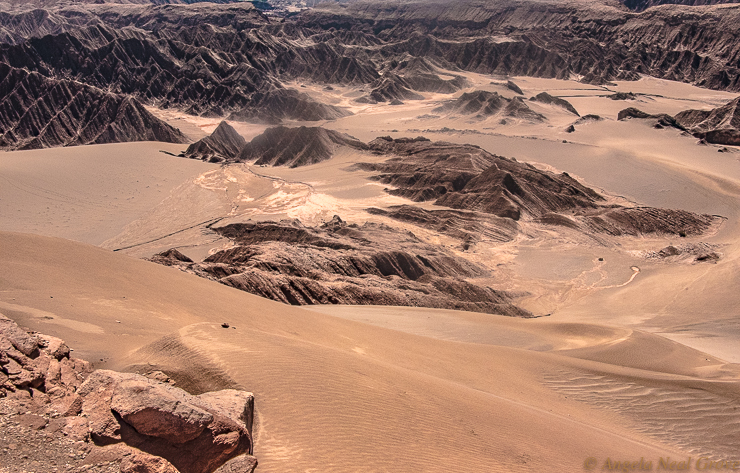
San Pedro de Atacama
San Pedro de Atacama at 7,900 ft has morphed from a salt, quartz and copper mining town into a popular hub for Atacama explorers. I began my exploration in the Valleys of The Moon and Mars which are easy day hikes from the town.
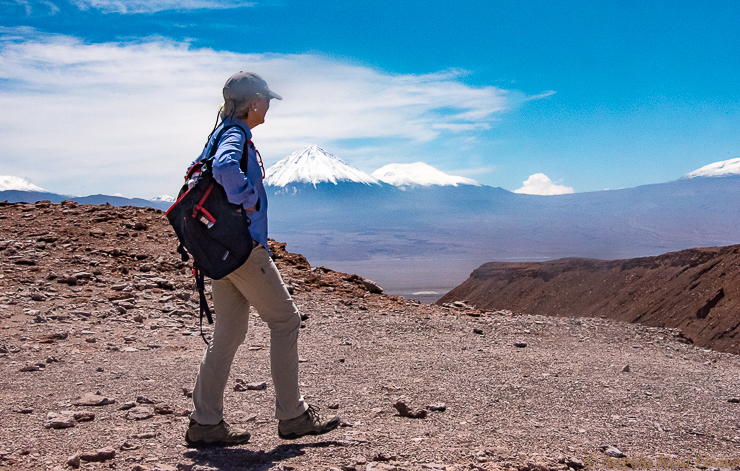
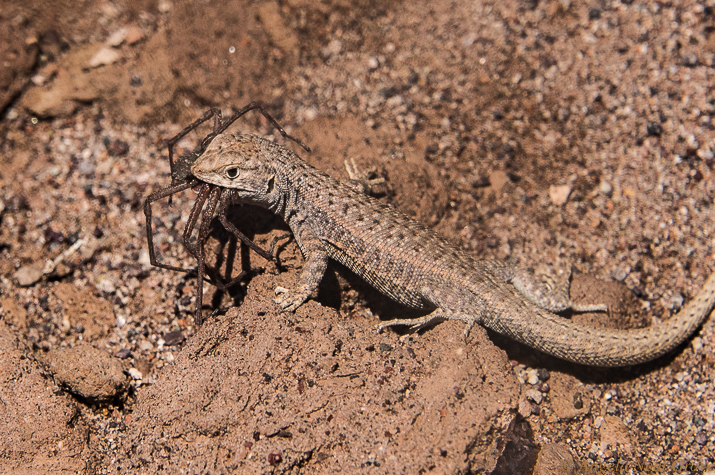
El Tatio Geysers
It was time to explore further. I wanted to see the El Tatio Geyser Field which has about 80 geysers and is the third largest in the world. The boiling water spurts highest in the early morning when the cold morning prevents the steam from evaporating so we set off early.
The geysers are about 55 miles from San Pedro and just a few meters from the Bolivan border. It is a steady climb to reach the fields at 14,173ft where the arid desert scene changes completely. Close to the geysers are watery meadows with grasses where vicuna graze. Flamingoes and waterfowl nest and search the water for food.
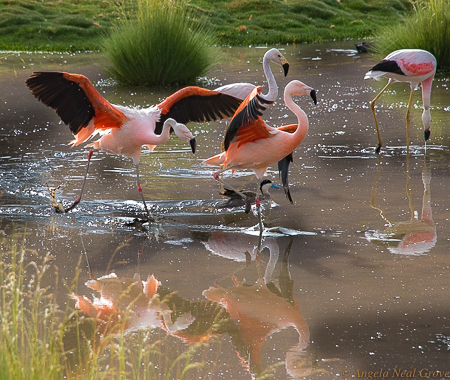
When we reached the field we stood in the cold morning air gasping from the altitude. We gazed out over the scene of bubbling pockets of water shooting geysers and steaming gases. Again it was otherworldly. This phenomenon occurs when cold underground water meets rocks heated by nearby volcanoes.
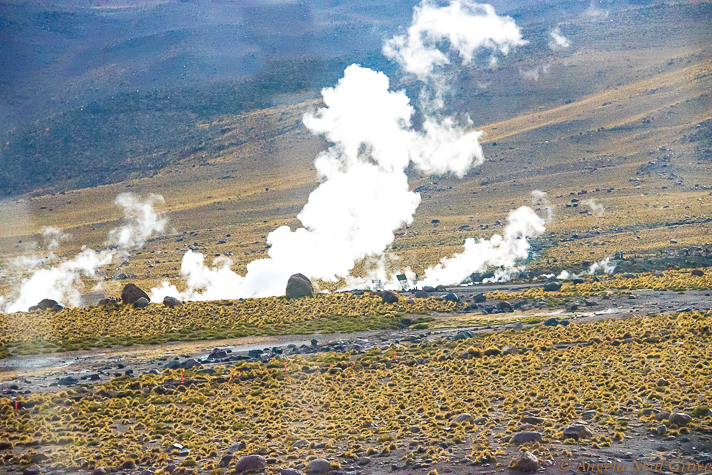
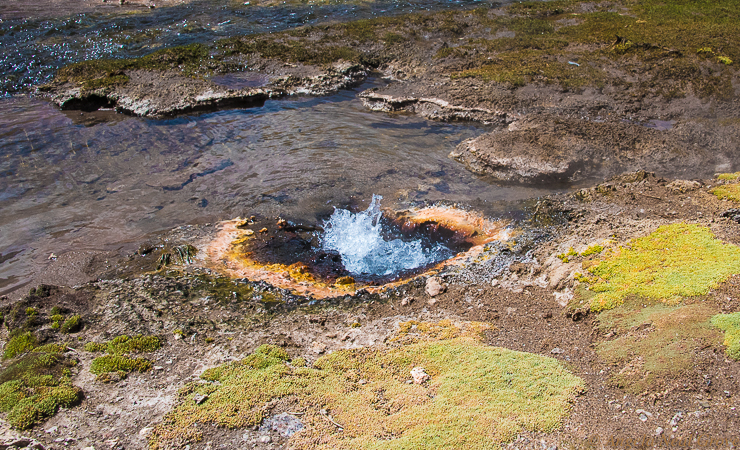
Hiking the Rio Blanco River
Having acclimatized somewhat to the elevation I wanted to tackle a hike where I could see more of the mountains and volcanoes above the desert floor. The Explorer guides suggested the Rio Blanco River trail. This begins begins near the El Tatio Geyser field and in places the river water runs warm. “Did I bring a swimsuit?” my guide asked. Next time…..
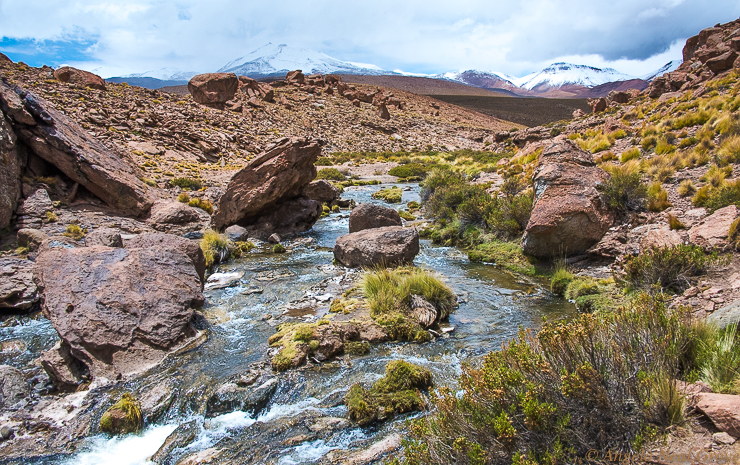
It was slow going on the challenging trail which had huge bolders. In places we also had to jump across the river. There were a couple of times when this was leap of faith for me. And there was also the altitude, all 14,173ft of it. But the hike was stunning and worth the effort.
Taking it slowly meant we were able to enjoy our natural companions. There was a big colony of Viscacha, a chinchilla like rabbit with a long tail. As we quietly waited they came out from the rocks and chased each other, long tails flopping. There were also vicuna, which are prized for their soft fur, and striped lizards.
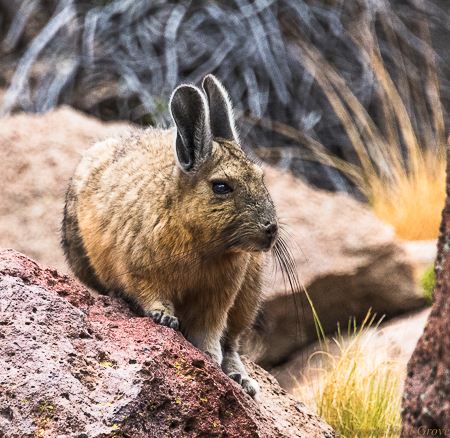
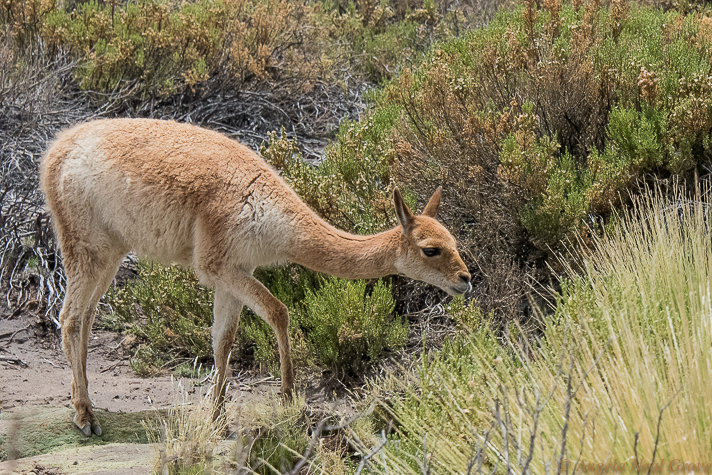
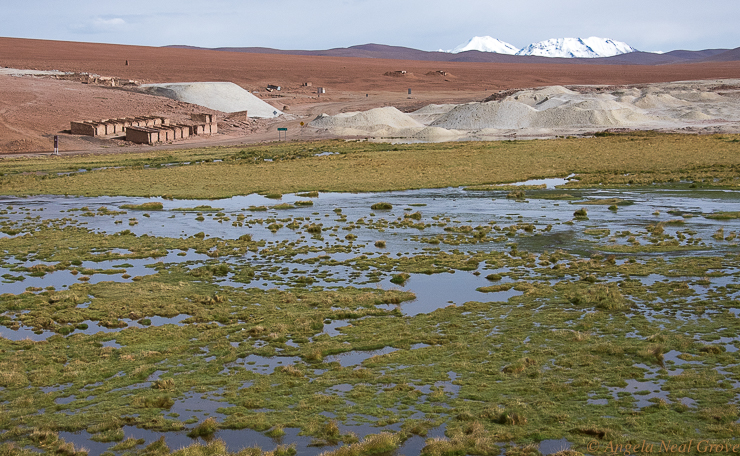
Mining in the Atacama Desert
Once almost all of the saltpetre used in the world came from the Atacama Desert. It was known as “white gold” and was in huge demand by industrializing European countries between 1880 and 1930 where it was used to make fertilizer. Saltpetre once provided 60% of Chile’s fiscal revenue.
Then the Germans discovered a way to make synthetic saltpetre during the first World War, and the industry in Chile collapsed. However, due to dry conditions, many of the old mining camps remain and are interesting to explore, like ghost camps.
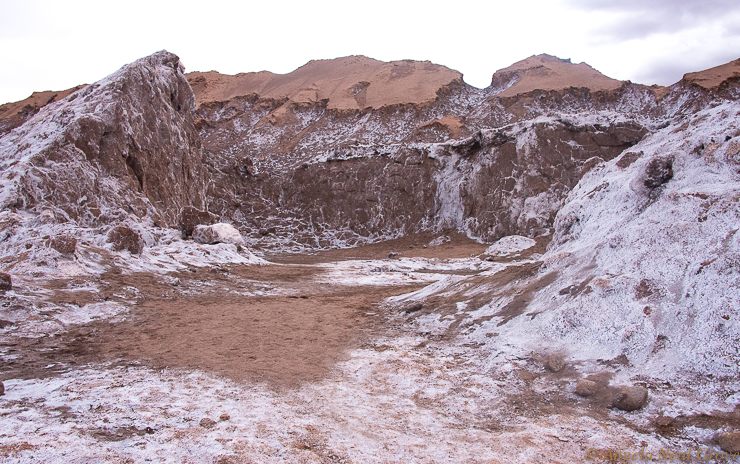
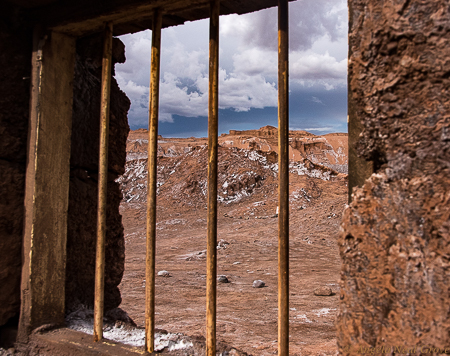
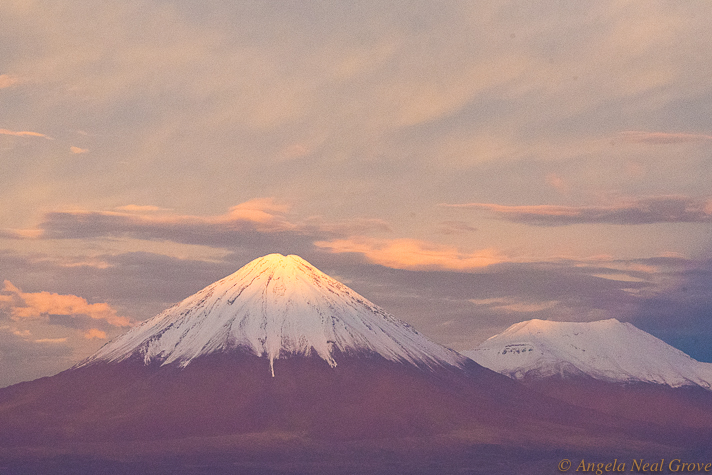
Climate Change: A One Hundred Year Storm
At the beginning of this piece I mentioned that the Atacama Desert is the driest place on earth. For four hundred years – when weather records began in Chile – there was virtually no rain.
Things began to change in 1971 and this year, when I was there, we had storms which were called the Hundred Year Storms. Roads were washed out, bridges collapsed and I was unable to finish all of the things I wanted to do in Atacama. Many National Parks were completely closed due to weather.
The upside was that the volcanoes in the otherworldly Atacama Desert were snowcapped during my stay. A photographer’s delight.
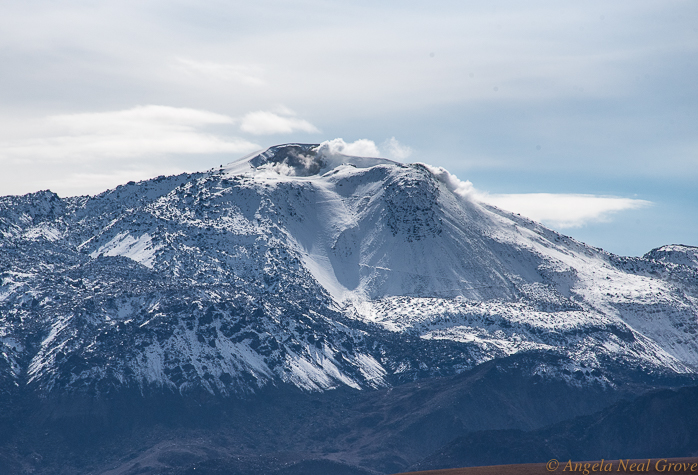
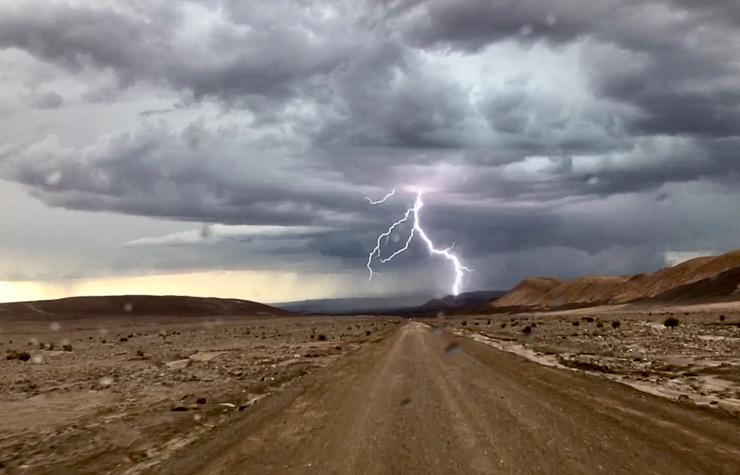
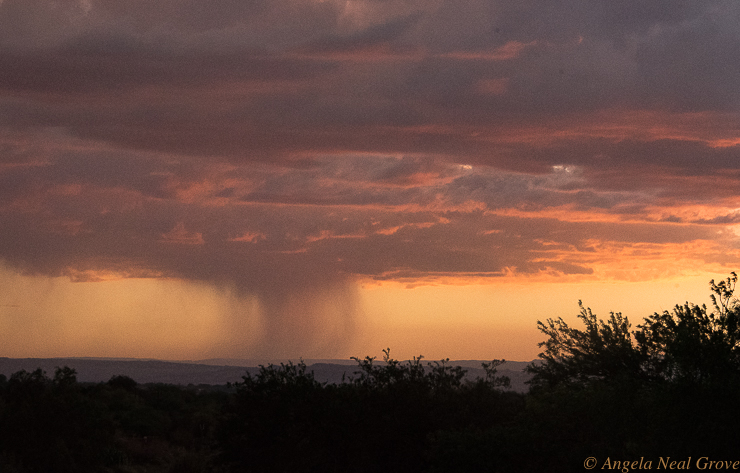

Lithium and Copper: New Hot Commodities
Since returning from Atacama I have read more about mining in Chile, and the Atacama Desert. Today the most lucrative mining is for copper and lithium. The super-new Calama airport into which I flew has clearly been built with the big mining industry in mind.
However Lithium mining to use in green cars is not having a green effect in Chile. I suggest reading: “Saving the Planet With Electric Cars Means Strangling This Desert” by Laura Millan Lombrana. Lombrana states, “Mining Lithium and copper to supply the battery boom and fight climate change is wrecking a fragile ecosystem in Chile.”
As always I really appreciate feedback and hope you enjoyed Otherworldly Atacama Desert. Please leave comments in the box below. Lets create a dialogue. For those on my mailing list please click HERE to leave a comment on the page.
Angela, i learned so much about the atacama desert from your photographs (the valley of Mars is spectacular and, yes, otherworldly…that lizard with the huge spider in its mouth! ….that lightning shot taken by the guide…and just all of them gave me such a sense of place)… and the issues facing it re: mining and climate change. Thank you for sharing this.
Thank you Cheryl. The lightening shot was taken on an iphone set to video. the shot was then pulled from the video stream. it was spectacular but also a bit scary. serious lightening and thunder – in what was once the driest place on earth….
Absolutely fascinating. I loved reading about your travels to this most under-visited place. As an owner of two electric cars, I’m particularly interested to follow up about lithium-mining and what it might mean in parts of the world that I know nothing about.
Thanks, as ever, for shining a light on little-known, but highly relevant details of today’s complicated world. x
Thank you imogen. It is remote, but very beautiful. now British Air have direct flights to santiago from Heathrow. There were quite a few brits there exploring! as for the lithium mining I heard a bit about the damage when I was there and followed up. like most things there are two sides to this issue. it is all a balancing act. solutions to one issue sometimes have a serous downside.
Thanks,Angela. My wife and I were in JuJue province (?sp) in 2012 on the other side of the Andes from the anacoma desert in chile and envied a group of travelers who arrived at our hotel and marvelled at their experience at the anacoma desert. Your photos are spectacular.